Genealogy
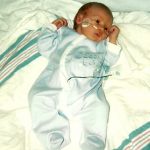
 Today, September 9, 2018, my grandson, Josh Petersen, the last teenager in our family, turned 20. It is very strange to think about the fact that we have no teenagers. The teenage years have been a big part of our family for so many years…9 to be exact. I know that many families have teenagers for a lot longer, but then all four of my grandchildren arrived within 2½ years…from first to last. So, now we begin a new era. One where our grandchildren are adults, and have or soon will begin families of their own. It’s a strange thing when your family goes from one era to the next, but then, you get used to it, and you go on…like we will now. Life is a process that you just cant slow down, no matter how much you would like to.
Today, September 9, 2018, my grandson, Josh Petersen, the last teenager in our family, turned 20. It is very strange to think about the fact that we have no teenagers. The teenage years have been a big part of our family for so many years…9 to be exact. I know that many families have teenagers for a lot longer, but then all four of my grandchildren arrived within 2½ years…from first to last. So, now we begin a new era. One where our grandchildren are adults, and have or soon will begin families of their own. It’s a strange thing when your family goes from one era to the next, but then, you get used to it, and you go on…like we will now. Life is a process that you just cant slow down, no matter how much you would like to.
In reality, Josh has seemed older than his years for a while now. He has been taking college classes since he was a kid in high school, and already has his associates degree in Fire Science. He has a year of full time college behind him now,and has started the Paramedic program this year. I am so proud of how far he has gone. He came from a beginning that was 5 weeks before he should have arrived, to spending 2½ weeks in Denver’s Presbyterian Saint Luke’s neo-natal intensive care unit; to growing like a weed; to helping with caregiving from his great grandparents for 13 years; and now, to studying for his own career in fire science and paramedics. I have always felt Josh would be perfect in this type of career, because he has a caregiver’s heart and is meticulous in the things that needed done. If you told him howto do something, he did it…just exactly as you said…no improvising. We always knew we could trust him, and trust is a big thing in the world of caregiving. People are entrusting you with their lives.
Josh is a kind and loving young man, with a strong sense of integrity. He is not one to lie to you. Oh, I’m not saying that he has never told a lie…we have all done that, but he doesn’t make a habit of it. When he tells me something, I believe him. Josh tries to do his best in everything he does, and I really respect that. As he 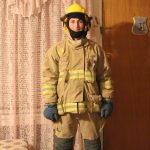
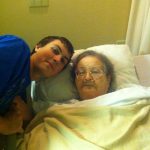 transitions from a boy to a man, I feel a great sense of pride in the man he is becoming, and I know that he will go far in his chosen career, and in life. The things he is doing are so perfect for his personality, and that makes me very happy. And, it makes me happy that he is having so much fun doing it. As the old saying goes, “Choose a job you love, and you will never have to work a day in your life.” That is what Josh has done, and I am very proud of him, and very proud of the firefighter he will one day be. Today is Josh’s 20th birthday. Happy birthday Josh!! Have a great day!! We love you!!
transitions from a boy to a man, I feel a great sense of pride in the man he is becoming, and I know that he will go far in his chosen career, and in life. The things he is doing are so perfect for his personality, and that makes me very happy. And, it makes me happy that he is having so much fun doing it. As the old saying goes, “Choose a job you love, and you will never have to work a day in your life.” That is what Josh has done, and I am very proud of him, and very proud of the firefighter he will one day be. Today is Josh’s 20th birthday. Happy birthday Josh!! Have a great day!! We love you!!
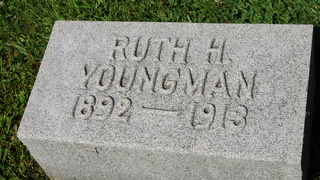 The headline read “Wedding Gown To Be Her Shroud.” The newspaper article was about a horrible tragedy, that took place just four days after the wedding of my husband, Bob’s 6th cousin 3 times removed, Ruth Schulenberg to Wilberd Youngman. The wedding took place on November 26, 1913, and was a large social affair for the smaller town of Tolono, Illinois, population of about 700, at the time. Ruth Schulenberg, was the daughter of Mr and Mrs Henry Schulenberg, and was a graduate of Saint Mary’s of the Wood where she was a member of a prominent sorority. Wilberd Youngman employed as a draughsman by the Burr Company of Champaign, Illinois. The wedding took place at Saint Patrick’s Catholic Church in Tolono.
The headline read “Wedding Gown To Be Her Shroud.” The newspaper article was about a horrible tragedy, that took place just four days after the wedding of my husband, Bob’s 6th cousin 3 times removed, Ruth Schulenberg to Wilberd Youngman. The wedding took place on November 26, 1913, and was a large social affair for the smaller town of Tolono, Illinois, population of about 700, at the time. Ruth Schulenberg, was the daughter of Mr and Mrs Henry Schulenberg, and was a graduate of Saint Mary’s of the Wood where she was a member of a prominent sorority. Wilberd Youngman employed as a draughsman by the Burr Company of Champaign, Illinois. The wedding took place at Saint Patrick’s Catholic Church in Tolono.
After their wedding, the young couple was on their honeymoon, in Kokomo, Indiana, where they had attended church at the Kokomo Catholic Church. Following the church service, they were on their way to a big wedding dinner in their honor at the country residence of a neighbor of Youngman’s cousin, Edward Grishaw, who was 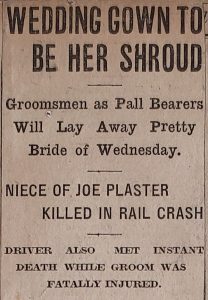
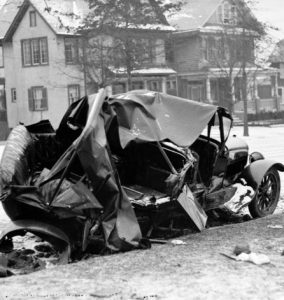 transporting the couple in a closed carriage. As the carriage began its crossing of the tracks of the Lake Erie and Western Railway, Grishaw failed for look for trains, and pulled out in front of the Lake Erie train going full speed. The train ripped through the car, and by the time the train could stop and the crew reached the car’s occupants, Ruth Schulenberg and Edward Grishaw were dead. Wilberd Youngman was critically injured, and not expected to live.
transporting the couple in a closed carriage. As the carriage began its crossing of the tracks of the Lake Erie and Western Railway, Grishaw failed for look for trains, and pulled out in front of the Lake Erie train going full speed. The train ripped through the car, and by the time the train could stop and the crew reached the car’s occupants, Ruth Schulenberg and Edward Grishaw were dead. Wilberd Youngman was critically injured, and not expected to live.
Amazingly, Wilberd Youngman did live…for eleven months. Youngman was taken to a hospital in Chicago, but his prognosis was grim. People just don’t come back from being hit by a train that ripped their car apart, and yet he was still alive, and actually recovering from his injuries…the visible injuries anyway. Youngman had lost so much that November day, and he was struggling to move forward. Ruth Schulenberg had been his soulmate, and his very best friend. She was the love of his life, and he knew there could never be another woman for him. Wilberd Youngman was not a man who would commit suicide, but he also could not recover from this deepest injury…the one that broke his heart. Slowly, over the eleven months that followed the saddest day of 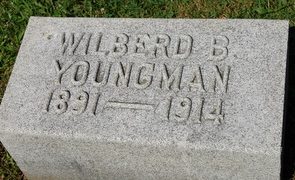 his life, Wilberd Youngman dwindled away. it wasn’t a refusal of food and water, but rather a refusal to go on without his precious Ruth. Finally, on October 24, 1914, just short of 11 months after that awful day…November 30, 1913, Wilberd Youngman could no longer go on living, and so, with his parents by his side, he simply passed away. The final cause of death was listed as a broken heart. That, to me was the saddest cause of death I had ever heard. Because of the loss of his wife, Wilberd simply had no desire to live either. He tried to recover…physically, but his heart was no longer in it, and he finally just gave up and quit trying. The Honeymoon Tragedy had finally claimed it’s last victim.
his life, Wilberd Youngman dwindled away. it wasn’t a refusal of food and water, but rather a refusal to go on without his precious Ruth. Finally, on October 24, 1914, just short of 11 months after that awful day…November 30, 1913, Wilberd Youngman could no longer go on living, and so, with his parents by his side, he simply passed away. The final cause of death was listed as a broken heart. That, to me was the saddest cause of death I had ever heard. Because of the loss of his wife, Wilberd simply had no desire to live either. He tried to recover…physically, but his heart was no longer in it, and he finally just gave up and quit trying. The Honeymoon Tragedy had finally claimed it’s last victim.
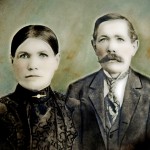 My great grandparents, Carl and Henriette (Hensel) Schumacher immigrated to the United States from Germany, in 1884 and 1882 respectively. It was an amazing time for them. The United States was a whole new world, and for those who came, the land of opportunity. By 1886, they were married and ready to start a family. My grandmother, Anna Schumacher was born in 1887, followed by siblings Albert, Mary (who died before she was 3), Mina, Fred, Bertha, and Elsa, who was born in 1902.
My great grandparents, Carl and Henriette (Hensel) Schumacher immigrated to the United States from Germany, in 1884 and 1882 respectively. It was an amazing time for them. The United States was a whole new world, and for those who came, the land of opportunity. By 1886, they were married and ready to start a family. My grandmother, Anna Schumacher was born in 1887, followed by siblings Albert, Mary (who died before she was 3), Mina, Fred, Bertha, and Elsa, who was born in 1902.
By 1914, World War I broke out, following the assassination of Franz Ferdinand. The government of the United States was understandably nervous about the German immigrants now living in in America. It didn’t matter that many of these people had been living in the united States for a long time, and some had become citizens, married, and had families. The government was still nervous, and I can understand how that could be, because we have the same problem these days with the Muslim nations. Still, when I think about the fact that these were my sweet, kind, and loving, totally Lutheran great grandparents, I find it hard to believe that anyone could be nervous about them. Apparently, I was right, because to my knowledge, they were never detained in any of the internment camps, nor were they even threatened with it.
Nevertheless, there were German nationals, and even naturalized citizens who faced possible detention during 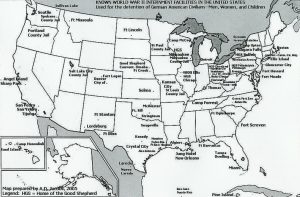 World War I and World War II. By World War II, President Franklin Delano Roosevelt declared Presidential Proclamation 2526, the legal basis for internment under the authority of the Alien and Sedition Acts. With the United States’ entry into World War I, the German nationals were automatically classified as “enemy aliens.” Two of the four main World War I-era internment camps were located in Hot Springs, North Carolina and Fort Oglethorpe, Georgia. Attorney General A. Mitchell Palmer wrote that “All aliens interned by the government are regarded as enemies, and their property is treated accordingly.”
World War I and World War II. By World War II, President Franklin Delano Roosevelt declared Presidential Proclamation 2526, the legal basis for internment under the authority of the Alien and Sedition Acts. With the United States’ entry into World War I, the German nationals were automatically classified as “enemy aliens.” Two of the four main World War I-era internment camps were located in Hot Springs, North Carolina and Fort Oglethorpe, Georgia. Attorney General A. Mitchell Palmer wrote that “All aliens interned by the government are regarded as enemies, and their property is treated accordingly.”
By the time of World War II, the United States had a large population of ethnic Germans. Among residents of the United States in 1940, more than 1.2 million persons had been born in Germany, 5 million had two native-German parents, and 6 million had one native-German parent. Many more had distant German ancestry. With that many people of German ancestry, it seems impossible that they could have detained all of them. Nevertheless, at least 11,000 ethnic Germans, overwhelmingly German nationals were detained during World War II in the United States. The government examined the cases of German nationals individually, and detained relatively few in internment camps run by the Department of Justice, as per its responsibilities under the Alien and Sedition Acts. To a much lesser extent, some ethnic German United States citizens were classified as suspect after due process and also detained. There were also a small proportion of Italian nationals 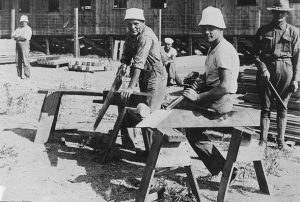 and Italian Americans who were interned in relation to their total population in the United States. The United States had allowed immigrants from both Germany and Italy to become naturalized citizens, which many had done by then. It was much less likely for those people to be detained, if they had already become citizens. In the early 21st century, Congress considered legislation to study treatment of European Americans during World War II, but it did not pass the House of Representatives. Activists and historians have identified certain injustices against these groups. I suppose that some injustices were done, but those were times of war and strong measures were needed.
and Italian Americans who were interned in relation to their total population in the United States. The United States had allowed immigrants from both Germany and Italy to become naturalized citizens, which many had done by then. It was much less likely for those people to be detained, if they had already become citizens. In the early 21st century, Congress considered legislation to study treatment of European Americans during World War II, but it did not pass the House of Representatives. Activists and historians have identified certain injustices against these groups. I suppose that some injustices were done, but those were times of war and strong measures were needed.
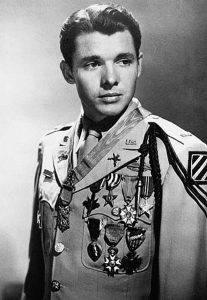 Recently, I found out that I am related to Audie Murphy, who was one of the most decorated American combat soldiers in World War II. As it turns out, he is my 7th cousin 3 times removed, on my dad’s side of the family. We share the same grandfather, Thomas Fuller, who is my 9th great grandfather, and Audie’s 7th great grandfather. Audie became an actor in 1948 and 1969, during which time he was beloved by many people, including my parents. I think they would have been very excited to find out that he was actually related to them, but then I guess they already know it by now. While his acting was impressive, it was his military career that always impressed my parents.
Recently, I found out that I am related to Audie Murphy, who was one of the most decorated American combat soldiers in World War II. As it turns out, he is my 7th cousin 3 times removed, on my dad’s side of the family. We share the same grandfather, Thomas Fuller, who is my 9th great grandfather, and Audie’s 7th great grandfather. Audie became an actor in 1948 and 1969, during which time he was beloved by many people, including my parents. I think they would have been very excited to find out that he was actually related to them, but then I guess they already know it by now. While his acting was impressive, it was his military career that always impressed my parents.
Audie Leon Murphy, was born on June 20, 1925 to Josie Bell Killian and Emmett Berry Murphy in Kingston, Texas. He was born into a large family of sharecroppers. Before long, his father abandoned them, and then his mother died when he was a teenager. Murphy left school in fifth grade to pick cotton and find other work to help support his family. He was a skilled rifleman, and hunting became a necessity for putting food on the table.
After the Japanese attacked Pearl Harbor in 1941, Murphy’s decided that he wanted to help, but he was too young. His older sister helped him to falsify documentation about his birthdate in order to meet the minimum-age requirement for enlisting in the military, because he was only 16 at the time. He was turned down by the Navy and the Marine Corps, so he enlisted in the Army. He first saw action in the 1943 Allied invasion of Sicily. Then, in 1944 he participated in the Battle of Anzio, the liberation of Rome, and the invasion of southern France. Murphy fought at Montélimar and led his men on a successful assault at the L’Omet quarry near Cleurie in northeastern France in October. He received every military combat award for valor available from the U.S. Army, as well as French and Belgian awards for heroism. Murphy received the Medal of Honor for valor that he demonstrated at the age of 19 for single-handedly holding off an entire company of German soldiers for an 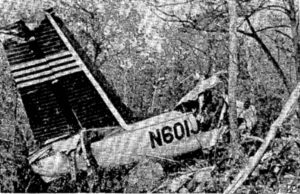 hour at the Colmar Pocket in France in January 1945, then leading a successful counterattack while wounded and out of ammunition.
hour at the Colmar Pocket in France in January 1945, then leading a successful counterattack while wounded and out of ammunition.
After his acting career ended, Murphy, like many actors without work, experienced money problems, but still, he refused offers to appear in alcohol and cigarette commercials, because he did not want to set a bad example. He never let Hollywood take away his high moral standards. Murphy died in a plane crash in Virginia in 1971, shortly before his 46th birthday. Such a sad ending to an amazing life. He was interred with full military honors at Arlington National Cemetery. His grave is one of the most visited sites in the cemetery.
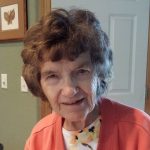
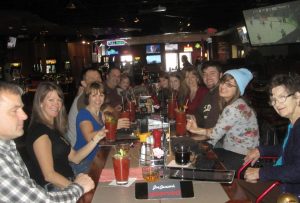 Four years ago, my mom, Collene Spencer; my sister, Cheryl Masterson; and I took a trip back to Superior, Wisconsin, which is where Cheryl and I were born. While we were there, we were invited to Julie Carlson Soukup’s home for dinner. My mom knew the parents of these cousins who had welcomed us into their home. Cheryl and I did too, but it had been a number of years since we had seen them, and certainly, most of the cousins themselves were totally new to us. We watched as the Carlson kids brought their mother, Carol Carlson to the dinner. She had been dealing with Lewy Body Dementia, which is much like Alzheimer’s disease, but with the added issue of motor problems. These kids were so careful with her, and so determined that she be able to come for this visit. It brought tears to my eyes to see such love. Having been a caregiver for a long time, I knew how much work caregiving is, but they didn’t care what it took. She was their mom.
Four years ago, my mom, Collene Spencer; my sister, Cheryl Masterson; and I took a trip back to Superior, Wisconsin, which is where Cheryl and I were born. While we were there, we were invited to Julie Carlson Soukup’s home for dinner. My mom knew the parents of these cousins who had welcomed us into their home. Cheryl and I did too, but it had been a number of years since we had seen them, and certainly, most of the cousins themselves were totally new to us. We watched as the Carlson kids brought their mother, Carol Carlson to the dinner. She had been dealing with Lewy Body Dementia, which is much like Alzheimer’s disease, but with the added issue of motor problems. These kids were so careful with her, and so determined that she be able to come for this visit. It brought tears to my eyes to see such love. Having been a caregiver for a long time, I knew how much work caregiving is, but they didn’t care what it took. She was their mom.
I didn’t know Carol well, but over the years, I watched as the Carlson family centered life around her. They took her so many places, and everywhere they went was an event, documented with lots of pictures. They were, of course, building their memories, knowing that the future was uncertain. They didn’t want to think about the day when Carol would no longer be with them. Right before we came for that visit, they had just had to move Carol into an nursing home, because she could no longer live on her own. Once again they showed her the greatest love they could have for her. They told her about her life, the life that had begun to slip away from her memory files. They needed to preserve it for her somehow.
When Carol passed away, on August 2nd, 2018, I began to recall the many beautiful things the Carlson family had done for her, but I realized that I didn’t really know much about her life. I wanted her children to share some of their favorite memories with me, because I knew that I wanted to write a tribute to their beautiful mother. They decided that they would send me a copy of the letter written by her oldest daughter, Laurie Carlson Stepp at the time they moved Carol into the nursing home. The children put together a scrap book filled with letters from her children and grandchildren, poems she had written, stories about her, such as her sayings…things they had heard her say all their lives, and pictures for her to see. It was their gift to their mother…her memories. They were giving them back to her.
I could never begin to write her memories with the beauty that her children and grandchildren did. Their 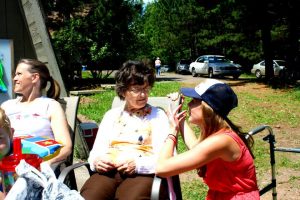
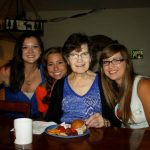 memories of her were their gift of love to her, and that is beyond special. Nevertheless, I want to try to highlight some of the wonderful things Carol Schumacher Carlson did in her lifetime. The reality is that Carol almost didn’t exist. Laurie tells that story in her letter to her mom, “Your parents, Fred and Anna Schumacher already had one lovely daughter, Beatrice. When she was born, there were serious difficulties and the doctor told Fred that he would have to choose between his wife and the baby. He chose his wife……she chose the baby! They were both saved, but the doctor cautioned against having any more children. So that is why you Carol were a miracle baby.” The faith of her parents brought about Carol’s life, as well as nine siblings after her. The letter told of the help Carol gave her mom with her younger siblings, Leslie, Carl, Margaret, Gilbert, Delwin, Noreen, Bernice, Bob, and Dale.
memories of her were their gift of love to her, and that is beyond special. Nevertheless, I want to try to highlight some of the wonderful things Carol Schumacher Carlson did in her lifetime. The reality is that Carol almost didn’t exist. Laurie tells that story in her letter to her mom, “Your parents, Fred and Anna Schumacher already had one lovely daughter, Beatrice. When she was born, there were serious difficulties and the doctor told Fred that he would have to choose between his wife and the baby. He chose his wife……she chose the baby! They were both saved, but the doctor cautioned against having any more children. So that is why you Carol were a miracle baby.” The faith of her parents brought about Carol’s life, as well as nine siblings after her. The letter told of the help Carol gave her mom with her younger siblings, Leslie, Carl, Margaret, Gilbert, Delwin, Noreen, Bernice, Bob, and Dale.
Carol was a hard worker all her life. She worked at Hills Brothers Dairy, then for a lawyer in Billings Park babysitting their children, as a waitress at the Princess Sweet Shop, at Phoenix Hosiery, at Twin Ports Dairy…where she did office work, and at Kempenski Glass Company. All these were jobs, but her real life’s work was to be the mother of her children. Carol married Donald John Carlson on August 21, 1954, and they would be blessed with Donny, Laurie, Steve, Dave, Jim and twins – Julie and Jeanne. Carol also had bonus children, Bonnie and Randy, from Don’s first marriage. Carol was a housewife, and very good at her job. They grew a big garden, canned and froze enough food to keep the family in vegetables most of the year. Their dad would come home and there was always a flurry of activity and fun. Carol cooked, cleaned, sewed, and took care of her family, and still had time to help out others too. The children always came home from school to some kind of homemade snack, but more importantly…they came home to their mom, Carol, who welcomed them with open arms. Carol baked 5 loaves of bread every day and packed countless lunches. She sewed clothes for her family and often surprised them with something new that they needed after staying up all night working with her sewing machine until it was finished. She made clothes, quilts, tents, and just about anything that could be made with cloth for her family and for her grandchildren too. She made Indian costumes with real tepees, which have been used by most of her grandsons. She made a pair of sandals for Jon and Josh when they were starting to walk, Prom dresses, bridesmaid dresses, suits, pants, skirts, shirts, blouses…the family was always wearing something Carol had made. They have always felt so blessed to have Carol in their lives.
When I set out to write this tribute to Carol Schumacher Carlson, I wanted it to be about the amazing things 
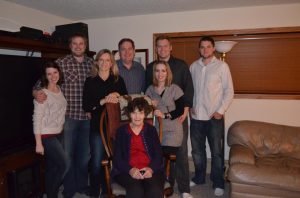 she did for those she loved. Little did I know that it would be about the amazing children she raised, but in reality, it had to be about her amazing children, because that was what Carol was all about. Her whole life was spent giving of herself to those she loved and cared about. It was Carol, who along with her husband, Don raised these kids to be the loving, responsible adults that they have become. That, in itself, is a tribute to Carol. Her hard work for her family, was her gift to them, and they were her reward…her legacy.
she did for those she loved. Little did I know that it would be about the amazing children she raised, but in reality, it had to be about her amazing children, because that was what Carol was all about. Her whole life was spent giving of herself to those she loved and cared about. It was Carol, who along with her husband, Don raised these kids to be the loving, responsible adults that they have become. That, in itself, is a tribute to Carol. Her hard work for her family, was her gift to them, and they were her reward…her legacy.
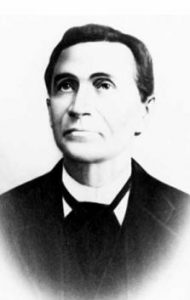 The other day, while reading an article about notable Native Americans, I came across a name that was familiar to me, but really didn’t seem like a Native American name. The name was Renville, the same name as my grand-nephew, James Renville. Immediately, I wondered if there might be a connection between Chief Gabriel Renville and my grand-nephew. The search didn’t take very long, before I had my answer. Gabriel Renville is my grand-nephew, James’ 1st cousin 7 times removed. I find that to be extremely amazing to think that James is related to an Indian chief. With that information, I wanted to fine out more abut this man.
The other day, while reading an article about notable Native Americans, I came across a name that was familiar to me, but really didn’t seem like a Native American name. The name was Renville, the same name as my grand-nephew, James Renville. Immediately, I wondered if there might be a connection between Chief Gabriel Renville and my grand-nephew. The search didn’t take very long, before I had my answer. Gabriel Renville is my grand-nephew, James’ 1st cousin 7 times removed. I find that to be extremely amazing to think that James is related to an Indian chief. With that information, I wanted to fine out more abut this man.
Chief Gabriel Renville was a mixed-blood Santee Sioux—his father was half French and his mother half-Scottish. He was born in April of 1825 at Big Stone Lake, South Dakota. Renville was the treaty chief of the Sisseton-Wahpeton Santee tribes and signed the 1867 treaty, which established the boundaries of the Lake Traverse Reservation. One source called him a Champion of Excellence.
He was careful to protect his people as much as he could, and was also instrumental in saving the lives of many white captives. During the 1862 Uprising, Renville opposed Little Crow and was influential in keeping many of the Santee out of the war. He lost a large amount of property, including horses appropriated by the hostile savages, or destroyed in consequence of his position to their murderous course. Renville served as chief of scouts for General Sibley during the campaign against the Sioux in 1863.
Even though Chief Renville was an ally of the whites, it didn’t help him when he settled on the reservation. The government agent there, Moses N. Adams, considered him hostile. Renville was the leader of the “scout party” which was in conflict with the “good church” Indians. I’m sure that was common in those days. Renville preserved many of the traditional Santee customs of polygamy and dancing, and he ignored Christianity, but he 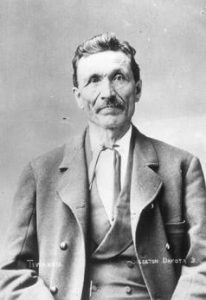 was not opposed to economic progress and he and his followers became successful farmers on the reservation. However, the Sisseton agent favored the “church” Indians.
was not opposed to economic progress and he and his followers became successful farmers on the reservation. However, the Sisseton agent favored the “church” Indians.
Renville and other leaders of the traditional Indians accused Adams of discriminating against them in the disposition of supplies and equipment. He said Adams favored the idle church-goers instead of encouraging them to work….a situation not unlike the current welfare system. Agent Adams considered Renville a detriment and removed the chief form the reservation executive board which Adams had organized to carry out his policies. It was a move that was considered extreme. In 1874 Renville was finally successful in securing a government investigation of the Adam’s activities. The outcome of the investigation was an official censure of Adams. Chief Renville continued to practice the old Santee customs, yet he encouraged the Indians to farm. This progressive influence was greatly missed after his death in August 1892.
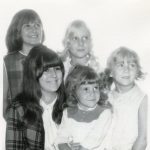 For a number of years I have wondered why my sisters all had a sweetheart chin and jawline, while mine was pretty square. It wasn’t something my sisters particularly noticed, and maybe my parents didn’t either, but I did. It just seemed so…square. I always thought it made my face look fat…especially if I was seated in the front in pictures. In reality, I suppose it isn’t so different from my sisters, and most people would never notice it unless I pointed it out, but we are usually our own worst critic, so I definitely notice that jawline.
For a number of years I have wondered why my sisters all had a sweetheart chin and jawline, while mine was pretty square. It wasn’t something my sisters particularly noticed, and maybe my parents didn’t either, but I did. It just seemed so…square. I always thought it made my face look fat…especially if I was seated in the front in pictures. In reality, I suppose it isn’t so different from my sisters, and most people would never notice it unless I pointed it out, but we are usually our own worst critic, so I definitely notice that jawline.
I was talking to my sister, Cheryl Masterson about it the other day, and we began to wonder just where it came from. I decided to take a look at the pictures I have of ancestors on my Ancestry tree. It took a few minutes, but I came across a grandmother, Mary Ann Jeffries, who married James Fishburn. Grandma Fishburn seems to have the same jaw line that I do. I don’t think I really look like her in most ways, but that jawline is pretty distinct. My sister had to agree too. We know very little about Grandma Fishburn, because she passed away back in 1913, long before I was born.
Mary Ann and her first husband, Andrew Lake were apparently divorced, because he died after her, but she went on to marry my 2nd great grandfather, James Fishburn in 1863. She and her first husband had a son, Christopher Daniel Lake in 1859, and with her second husband, she had Hanna in 1867, Almira in 1869, and Edna in 1871 (my great grandmother). James, my 2nd great grandfather, died in 1897. In about 1900, Mary 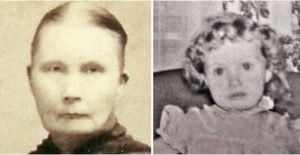 Ann married John Parker, who died in 1914, about a year after she did. I don’t really know anything more but the woman with whom I share a jawline, but it seems to me that he was not a quitter. She didn’t let life’s disappointments destroy her life, but rather picked herself up by the bootstraps and moved forward. Maybe it was because she had children to care for or live for, or maybe she just understood that life isn’t always a bed of roses, and we must each play the hand we are dealt. With perseverance, and faith in God, we go forward, and live on. As for me, I finally know where that jawline came from.
Ann married John Parker, who died in 1914, about a year after she did. I don’t really know anything more but the woman with whom I share a jawline, but it seems to me that he was not a quitter. She didn’t let life’s disappointments destroy her life, but rather picked herself up by the bootstraps and moved forward. Maybe it was because she had children to care for or live for, or maybe she just understood that life isn’t always a bed of roses, and we must each play the hand we are dealt. With perseverance, and faith in God, we go forward, and live on. As for me, I finally know where that jawline came from.
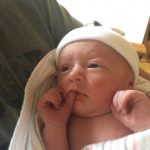
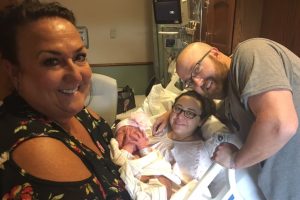
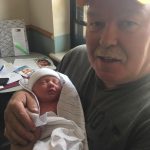 Yesterday, August 3, 2018, at precisely 7:45am, Miss Elliott Michelle Stevens made her grand entrance into the world. Elliott, who will likely be nicknamed El or Elli, is the daughter and first child of my nephew, Garrett Stevens and his lovely wife, Kayla Smiley Stevens. Elliott is the first grandchild on both sides of their families, and so will be “spoiled” by grandmothers, Alena Stevens and Lynnette Smiley, as well as grandfathers, Mike Stevens and Wes Smiley. She also has three aunts, Michelle Stevens, Lacey Stevens, and Lexi Smiley, who all became aunts the moment Elliot arrived. Elliot has changed a lot of lives, and all she did was to be born. It was a big job, but Elliott was up to the task.
Yesterday, August 3, 2018, at precisely 7:45am, Miss Elliott Michelle Stevens made her grand entrance into the world. Elliott, who will likely be nicknamed El or Elli, is the daughter and first child of my nephew, Garrett Stevens and his lovely wife, Kayla Smiley Stevens. Elliott is the first grandchild on both sides of their families, and so will be “spoiled” by grandmothers, Alena Stevens and Lynnette Smiley, as well as grandfathers, Mike Stevens and Wes Smiley. She also has three aunts, Michelle Stevens, Lacey Stevens, and Lexi Smiley, who all became aunts the moment Elliot arrived. Elliot has changed a lot of lives, and all she did was to be born. It was a big job, but Elliott was up to the task.
Elliott is a pretty little girl, who likes to suck her thumb a little. Time will tell if that becomes a habit. She is a good baby, who doesn’t seem to cry much. She will find her voice, I’m sure, but for now, she is just relaxing and enjoying her new world and all the loving grandparents and great grandmother she has found there. Little 

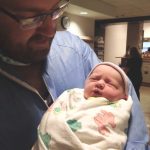 does she know that there are many other family members who are waiting excitedly to meet her too. She has been born into a much larger family than she could possibly imagine, but those meetings will come in time. For now, she is just enjoying a few family members, and especially her parents, who are still marveling at the little blessing they have been given. And while Kayla and Garrett have become something their siblings are not…parents, their siblings have also become something they are not…aunts.
does she know that there are many other family members who are waiting excitedly to meet her too. She has been born into a much larger family than she could possibly imagine, but those meetings will come in time. For now, she is just enjoying a few family members, and especially her parents, who are still marveling at the little blessing they have been given. And while Kayla and Garrett have become something their siblings are not…parents, their siblings have also become something they are not…aunts.
Time will tell who little Elliott will look like, and we all see similarities between her and her family members, but she will change quite a lot over the next few months and more similarities will begin to show. We will see an expression here, a facial shape there, and hair color will also begin to tell the tale. As she finds her voice, we might discover that she laughs like one person, or her voice sounds like another…it might even be an aunt or grandmother…or even a great aunt or uncle. Babies are amazing that way. They are created by God from the 
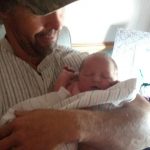
 traits He ordains in their family DNA to be the perfect little person, unique and yet similar. I can’t wait to see who little Elliott Michelle will resemble as she grows. No matter who it is, she will be beautiful, just as she is right now, because she comes from two beautiful parents. Welcome to the world, Elliott Michelle, and to our family. We love you so much already!!
traits He ordains in their family DNA to be the perfect little person, unique and yet similar. I can’t wait to see who little Elliott Michelle will resemble as she grows. No matter who it is, she will be beautiful, just as she is right now, because she comes from two beautiful parents. Welcome to the world, Elliott Michelle, and to our family. We love you so much already!!
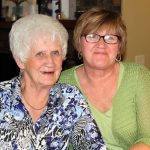 When I was a little girl, my family lived in Superior, Wisconsin. Those were wonderful years, but in more recent years we had not been back to Superior for a number of years. When my mom, Collene Spencer wanted to go back to Superior, my sister, Cheryl Masterson and I took her, since our dad had passed away by then. That, Ancestry, and Facebook opened up a whole new world for Cheryl and me. We got to know our cousins, and the list of cousins we know grows every day…or at least every year. This year, with the Schumacher Family Reunion, we knew we had to go, even though it would be without Mom this time. This trip was bittersweet, because of course, Mom was missing.
When I was a little girl, my family lived in Superior, Wisconsin. Those were wonderful years, but in more recent years we had not been back to Superior for a number of years. When my mom, Collene Spencer wanted to go back to Superior, my sister, Cheryl Masterson and I took her, since our dad had passed away by then. That, Ancestry, and Facebook opened up a whole new world for Cheryl and me. We got to know our cousins, and the list of cousins we know grows every day…or at least every year. This year, with the Schumacher Family Reunion, we knew we had to go, even though it would be without Mom this time. This trip was bittersweet, because of course, Mom was missing.
Nevertheless, we have had a wonderful time. When we were here the last time, our first cousins once removed, Les and Bev Schumacher had wanted us to come to their house, but our time was do limited, that we didn’t have time to. This time, their daughter, Cathy La Porte graciously invited us for dinner this evening. We got to meet her husband, Gary, as well as to see her brother, Brian Schumacher and his wife, Lisa again. It was simply a wonderful evening. Cathy is an excellent cook and we were treated to Walleye Pike and Northern Pike that Cathy’s husband, Gary caught in North Dakota with his brother this past 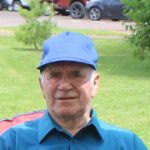 week. Wow!!! Was it good. Dessert was a Cherry Crumble that Lisa’s friend had given her, and everyone loved it.
week. Wow!!! Was it good. Dessert was a Cherry Crumble that Lisa’s friend had given her, and everyone loved it.
The evening was very enjoyable and will always be a sweet memory from our trip. The trip has gone by so fast, and what we thought was enough time, really wasn’t…it never is, is it? Nevertheless, the friendships (cousinships) formed will last for the rest of our lives, and while our parents weren’t there this time, we know they would be smiling…happy to see their daughters and granddaughter continue to reach out to the family as if they were with us. I guess we are carrying on the connections, and that would make them happy, and it makes me happy.
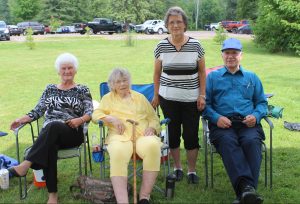
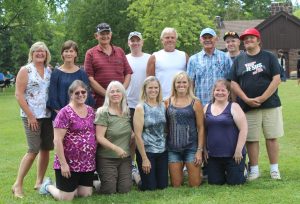 A few years back, I connected with a member of my Schumacher cousins, Tracey Schumacher Inglimo, in what would become a quest to get to know all of my Schumacher cousins, and like my Byer cousins, there were lots of them. The journey has been a wonderful trip, as my sisters and I have cultivated friendships with these precious cousins, some of whom we met on our 2014 trip back to our roots in Superior, Wisconsin. Now, four years later, my sister, Cheryl Masterson; her daughter, Liz Masterson; and I have returned to Superior, Wisconsin for a family reunion. We have been so excited for this reunion to happen, and in fact, have looked forward to reuniting with all of our cousins since we first met or found each other on Ancestry and Facebook.
A few years back, I connected with a member of my Schumacher cousins, Tracey Schumacher Inglimo, in what would become a quest to get to know all of my Schumacher cousins, and like my Byer cousins, there were lots of them. The journey has been a wonderful trip, as my sisters and I have cultivated friendships with these precious cousins, some of whom we met on our 2014 trip back to our roots in Superior, Wisconsin. Now, four years later, my sister, Cheryl Masterson; her daughter, Liz Masterson; and I have returned to Superior, Wisconsin for a family reunion. We have been so excited for this reunion to happen, and in fact, have looked forward to reuniting with all of our cousins since we first met or found each other on Ancestry and Facebook.
The reunion took place today at Pattison Park, and it definitely lived up to every hope we had for it. These precious cousins were friendly, hospitable, and informative, while also being curious about us too. We all shared tons of stories about our families, and of course, pictures of our kids, grandkids, and great grandkids. We hugged on the little ones, most of whom looked at us with a sense of wonder as to who we were, and maybe even wondering if we should be hugging them at all…at least until their parents said it was ok. We moved from group to group, and person to person trying to get to know everyone, all the while knowing that there just wasn’t enough time. We found out who the jokesters were too, because what family would be complete without those wonderful people who keep us laughing. We built bonds that will last a lifetime, and parted ways with expressions of sadness that the time had passed far to quickly. We tried to see how soon we could feasibly do this again, knowing that for most of us Facebook would have to suffice until the next reunion.
The time went by far too quickly indeed, and while we wish we could have had far more time to sit and talk, we all knew in our hearts that we had been given a precious gift…a gift of family, friendship, love, and a sense of belonging, because after all, that is what family reunions are all about. Families grow quickly, and the numbers can quickly grow to a point of losing sight of the ones who started the family in the beginning, but at reunions, 
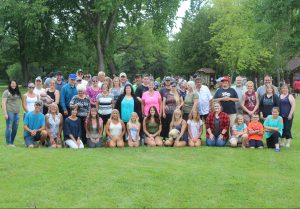 those who have left us are remembered and discussed, because everyone is trying to put into context, just exactly where they fit in with all these people. We talked of those who weren’t with us with love and sadness, because they would have really loved that their families have made the effort to keep the closeness going. To all those who made this reunion so very special, we love you and thank you for making our family reunion amazing.
those who have left us are remembered and discussed, because everyone is trying to put into context, just exactly where they fit in with all these people. We talked of those who weren’t with us with love and sadness, because they would have really loved that their families have made the effort to keep the closeness going. To all those who made this reunion so very special, we love you and thank you for making our family reunion amazing.

